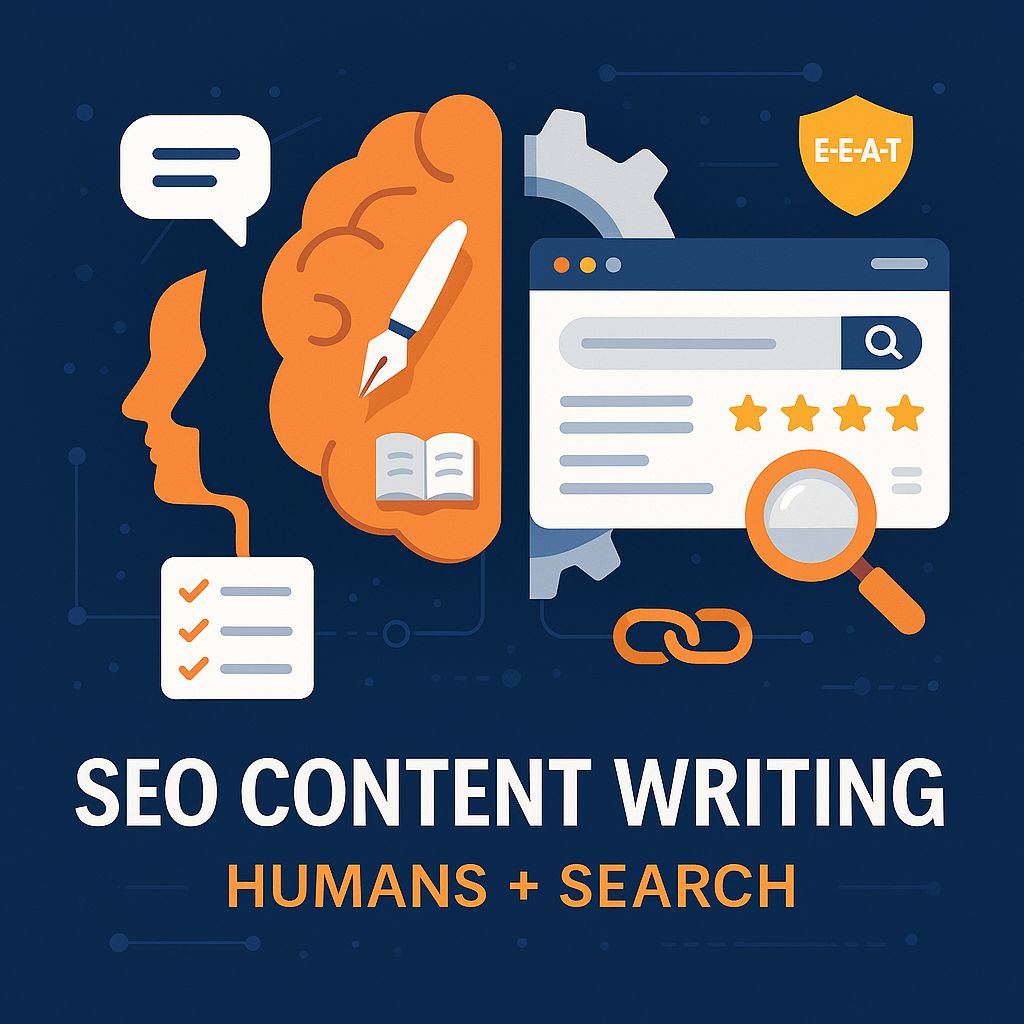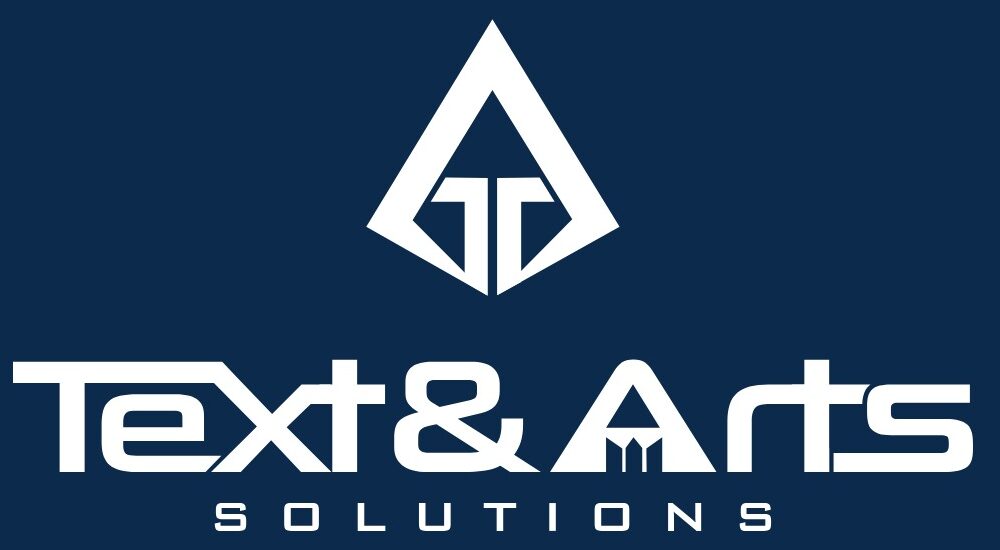Introduction
You don’t have to choose between the algorithm and your audience. The best-performing pages today prove the opposite: when you write for readers first, search engines reward you. This guide shows you how to practice SEO content writing without losing your voice—or your mind. You’ll learn intent-first planning, semantic structuring, and conversion-focused copy techniques that turn visits into value. We’ll share checklists, examples, and mini case studies you can apply immediately, whether you’re publishing your first article or scaling a content library at Text & Arts Solutions.
The Mindset Shift: What SEO Content Writing Really Means
Before tactics, calibrate your strategy. SEO content writing is not stuffing keywords into paragraphs; it’s designing a reading experience that matches search intent and delivers a clear outcome.
Humans First, Algorithms Second (That’s How You Win)
- Clarity beats cleverness. Readers skim; your job is to make the “what’s in it for me?” obvious in seconds.
- Specific > generic. Trade vague claims for concrete examples, numbers, steps, and screenshots.
- Credibility is content. Cite sources, show author expertise, add quotes or mini case studies (E-E-A-T in action).
- Outcome over output. A 1,200-word page that solves a problem beats a 3,000-word ramble.
Map Search Intent to the Buyer Journey
Every keyword sits somewhere on a journey:
- Informational: “what is,” “how to,” “best practices” → teach and guide.
- Comparative: “X vs Y,” “best tools,” “reviews” → compare and qualify.
- Transactional: “pricing,” “buy,” “book demo” → reduce friction and convert.
- Navigational: branded queries → deliver exactly what the user came for.
Tip: Write one primary intent per page. If your draft splits between “what is” and “pricing,” you likely need two URLs.
Research That Respects Readers (and Rankings)
Good writing starts before the blank page. Your research should transform keywords into questions that real people ask.
From Keywords to Questions to Content
- Collect seed terms (your core topics).
- Expand with questions from autocomplete and “People Also Ask.”
- Cluster by intent (informational, comparative, transactional).
- Prioritize by value (relevance, difficulty, potential revenue, internal demand).
- Draft a brief with: searcher goal, top subtopics, competitors’ gaps, target SERP features.
Quick example (abbrev.):
- Seed: “SEO content writing”
- Questions: “how to write for humans,” “semantic SEO checklist,” “content brief template”
- Cluster: “How-to guide,” “Checklist,” “Template” → three pages or one hub + spokes
Semantic SEO & Entities (Write Like a Librarian)
Search engines build meaning from entities (people, places, concepts) and their relationships.
- Cover related concepts (e.g., for this topic: search intent, E-E-A-T, schema, internal links, readability).
- Use natural synonyms and variations; don’t repeat the head term every other sentence.
- Answer adjacent questions succinctly to capture long-tail traffic and featured snippets.
- Mark up content (FAQPage, HowTo, Article schema) when relevant to help machines understand structure.
Outline First, Then Write (Structure Sells)
A tight outline prevents bloat and improves scannability—key to SEO content writing that performs.
The 7-Part Outline Blueprint
- Hook (2–4 lines): state the value and who it’s for.
- What/Why: define the topic in your words; align with intent.
- Framework: the model you’ll teach (steps, pillars, phases).
- How-to: numbered process with examples.
- Proof: mini case study, quote, or data point.
- Objections: common pitfalls and fixes.
- CTA: logical next step that matches reader state.
On-Page Elements That Move Needles
- H1: one per page, plain-language promise.
- H2/H3: structure topics and subtopics; bake queries into headings.
- Intro: show relevance fast; include the primary term naturally (“SEO content writing”).
- Media: diagrams, tables, or screenshots to compress complexity.
- Bullets & short paragraphs: improve time on page and scroll depth.
- Internal links: guide readers to adjacent value and distribute PageRank.
- Meta title & description: write like ads; reflect the page promise.
- CTAs: match intent (download template for informational pages, demo for comparative/transactional).
Writing Techniques That Keep Humans Reading
This is where your voice meets structure.
The Plain-English Playbook for SEO Content Writing
- One idea per sentence. Aim for 12–18 words.
- Front-load value. Put the main point first; trim throat clearing.
- Concrete nouns, active verbs. “Map intent,” “compress steps,” “ship drafts.”
- Parallelism. Keep list items grammatically consistent for easier scanning.
- Explainers, not slogans. Replace fluff with examples and mini walkthroughs.
Mini example (weak → strong):
- Weak: “Our solution is flexible for a variety of use cases.”
- Strong: “Create three content hubs, assign owners, and publish a brief every Monday.”
Pattern Breaks & Reader Energy
Attention dips every ~200–300 words. Reset it with:
- A diagram or numbered list
- A bold takeaway line
- A short anecdote or micro case
- A “Do/Don’t” table
- A checklist box (you can style it in your CMS)
Optimization Beyond Keywords (UX, Trust, and Conversion)
Highly ranked pages that don’t convert are just expensive brochures.
Readability & UX That Support the Copy
- Readable fonts and sizes (16px+ body), generous line height, ample whitespace.
- Accessible contrast and helpful alt text that describes the image role.
- Anchor links for long guides; sticky TOC on desktop.
- Fast loads (compress images, lazy-load embeds).
- Clean design—avoid intrusive popups that disrupt reading.
Conversion Copy Within Editorial Content
- Contextual CTAs: “Download the content brief template” right after you show how to use it.
- Two-door approach: a main CTA button + a low-commitment micro-CTA (e.g., “Email me the checklist”).
- Social proof snippets: “Used by 120+ teams,” “Rating 4.8/5,” placed near CTAs.
- Friction busters: “No email required,” “View in Google Docs,” “Edit a copy.”
Internal Linking & Content Architecture
Your site is a library; links are the signage.
Build Hubs and Spokes for SEO Content Writing
- Hub page (e.g., “SEO Content Writing: The Complete Guide”) summarizes and links out.
- Spoke pages (e.g., “Search Intent,” “Content Brief Template,” “Semantic SEO Checklist”) go deep.
- Cross-link spokes where they overlap to improve discoverability and topical authority.
- Use descriptive anchors (“semantic SEO checklist,” not “click here”).
When to Split One Page into Two
Create a new URL if:
- You target a different intent (e.g., “what is” vs “pricing”).
- The subsection earns consistent unique queries.
- You find yourself writing 2,500+ words and still trimming essentials.
Mini Case Studies (Composite Patterns)
Real outcomes vary, but these patterns repeat across industries.
SaaS Knowledge Hub (B2B)
Situation: Blog posts cannibalizing each other on similar keywords.
Actions:
- Consolidated overlapping posts into one hub + five spokes.
- Rewrote H2/H3s to match queries; added FAQ schema.
- Inserted product-agnostic checklists and a contextual “Try the planner” CTA.
Result (illustrative): 3× impressions, 70% lift in non-branded clicks within 90 days, demo trials up 22% from content pages.
Lesson: Topical clarity + internal links + intent-matched CTAs drive both traffic and trials.
D2C Buying Guide (B2C)
Situation: High traffic, low conversion on a “best X” article.
Actions:
- Reframed intro to “who this is for.”
- Moved comparison table above the fold; added “best for” labels.
- Wrote microcopy around objections (“ships free,” “easy returns”).
Result (illustrative): CTR to product pages +38%, add-to-cart rate +14%.
Lesson: Serve scanners first; decision clarity converts.
Editing, QA, and Publishing Cadence
Great pages are edited pages.
A 10-Point Edit Checklist for SEO Content Writing
- Intent check: Does the intro promise align with the keyword?
- H-structure: Do H2/H3s mirror user questions?
- Redundancy trim: Remove repeated claims; keep one strongest example.
- Evidence pass: Add a stat, quote, or visual where claims feel thin.
- Voice pass: Replace jargon with plain language.
- Snippet scan: Can any paragraph answer a query in 40–60 words?
- Linking pass: Add 2–4 internal links; 0–2 selective external citations.
- Meta & URL: Write title/description; confirm clean slug (contains seo content writing).
- Accessibility: Alt text, contrast, heading order.
- CTA fit: Does the call to action match reader stage?
Post-Publish Optimization Loop
- 30 days: check rankings & queries; add missing subtopics.
- Quarterly: refresh stats, expand FAQs, prune thin sections.
- Annually: consider a full rewrite if intent or SERP layout has shifted.
Distribution: Don’t Wait for Google Alone
Meet readers where they already are.
Repurpose with Purpose
- LinkedIn article → summary + link back to the hub.
- Twitter/Threads → 5-tweet/5-post insight thread with a visual.
- YouTube/Shorts → 60-second “3 mistakes to avoid” based on the post.
- Email → a short tip with one CTA: “Read the full guide.”
- Slides → turn your framework into a one-page PDF lead magnet.
Partnerships & Community
- Guest posts or co-created guides with complementary brands.
- Q&A on communities (niche Slack/Discord/Reddit), linking to your most helpful section—not the homepage.
- Webinars: use the guide as the syllabus; capture registrants for follow-ups.
Work with Text & Arts Solutions on SEO Content Writing
If you want consistent, high-performing content without the chaos, partner with Text & Arts Solutions. We combine strategy, research, writing, and design to ship assets that rank and convert.
What you get
- Intent-first content strategy (clusters, hubs, briefs)
- Research & semantic mapping (entities, questions, snippets)
- Editorial production (expert interviews, drafts, visuals)
- On-page optimization (titles, schema, internal links)
- Conversion copy (contextual CTAs, lead magnets, email follow-ups)
- Localization in English, Hindi, and Marathi
- Performance loop (dashboards, refresh cycles, experiment roadmaps)
Next step: Share your niche, goals, and top 5 competitors. We’ll reply with a sample content map and two draft H2 frameworks you can publish in the next 14 days.
Conclusion
You can write for people and still earn prime real estate on the SERP. The formula is simple, not easy: align with intent, structure for scanning, explain with examples, and optimize for trust and conversion. Keep your outlines tight, your language plain, and your CTAs logical. Refresh your pages as the questions change, and distribute your ideas beyond Google. Do this consistently and SEO content writing becomes a growth engine—not a guessing game. When you’re ready to scale that engine with a steady, expert hand, Text & Arts Solutions can help you plan, write, and optimize content that serves humans first—and lets search reward you for it.


